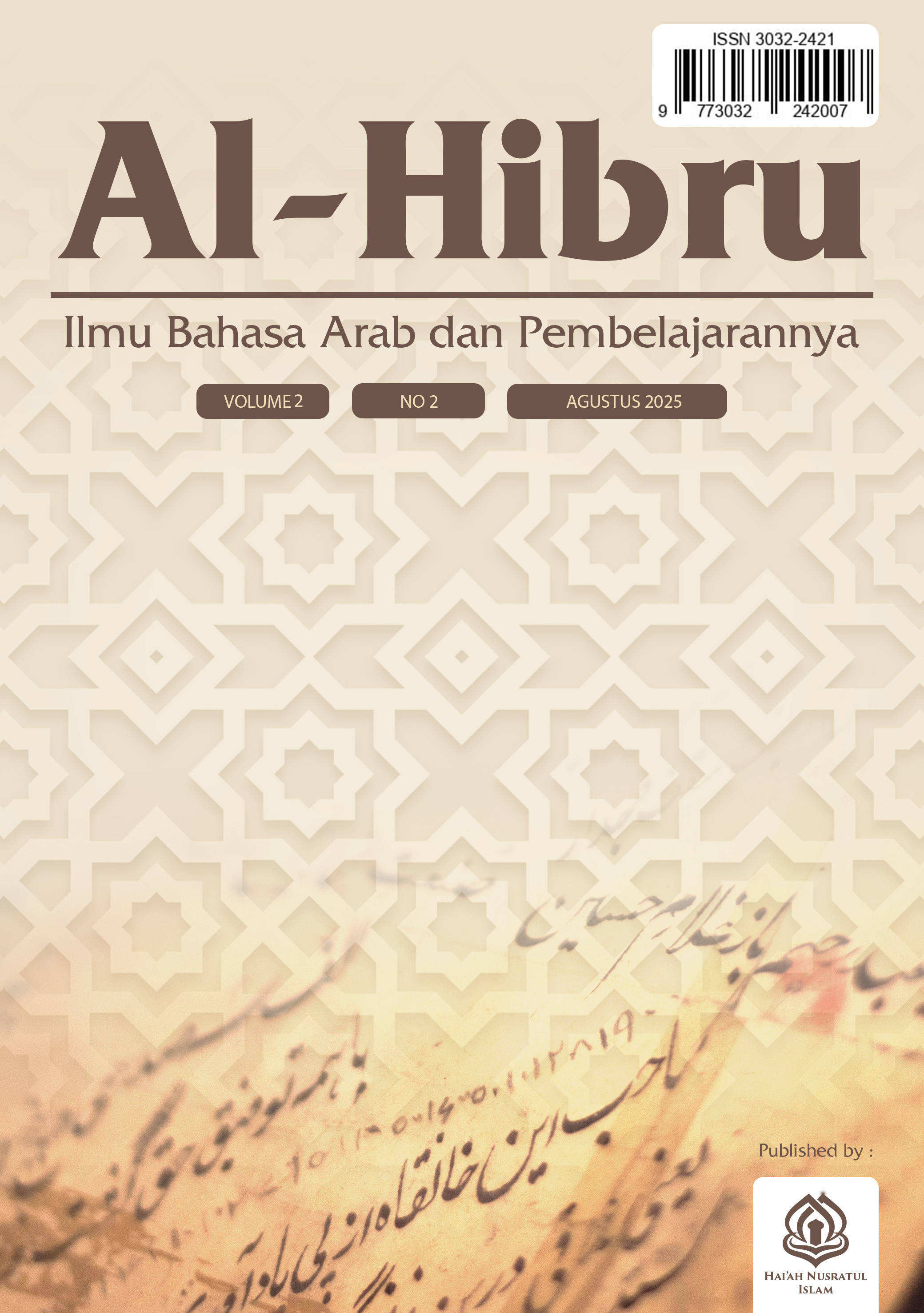ARABIC PHONOLOGY
DOI:
https://doi.org/10.59548/hbr.v2i2.316Keywords:
Phonemes, Aswat, and PhonologyAbstract
The study of language has a significant impact on human existence. Like two sides of a coin, language and life are inextricably linked phenomena. Words are a system of arbitrary sound symbols that people use to talk to one another. Language is a system with both systemic (subsystem) and systematic (methodical) properties. Phonology is one of the subsystems. One of the branches or levels of linguistics that covers all things relating to sounds is phonology. Words There are two categories for this language's sounds: phonetics and phonemic. As a subfield of phonology, phonetics examines related language sounds that do not alter meaning, whereas phonemes examine language sounds that do This essay aims to investigate Arabic phonology, namely the phoneme component. For Arabic language learners, the first thing they need to acquire is the language's sound. As a result, studying phonology is crucial for language acquisition and proficiency (foreign language). As a result, it becomes crucial to comprehend phonological research, or al-Aswa>t, in order to gain a thorough comprehension of Arabic language sounds, each of which naturally has a unique meaning.
References
Amrullah, M. A. (2016). ARBIC LANGUAGE PHONOLOGY (A Descriptive Review of Arabic Phonemes). Al Bayan Journal, 4.
Aprilia, C. (2024). Communication disorders in children with special needs. Journal of Psychology, 1, 11–19.
Engel. (2014). Factors that influence the awareness of the Bogor city Muslim community towards halal processed food products. Paper KnowledgeToward a Media History of Documents, Chapter II Studies and Theoretical Foundations, 6–36.
Hamid, H. A. (2017). Arabic Sound Teaching Techniques. Al-Bayan, 1-10. https://media.neliti.com/media/publications/74231-ID-teknik-pengajaran-bunyi- language-arab.pdf
Lundeto, A. (2018). Analysis of Arabic Phonetics and Morphology Teaching Methods. Iqra' Scientific Journal,3 (1). https://doi.org/10.30984/jii.v3i1.546
Masyhur. (2022). The Contribution of Phonetics in Arabic Language Studies Masyhur Faculty of Adab and Humanities UIN Raden Fatah Palembang. Tamaddun: Journal of Islamic Culture and Literature, 17(1), 37–58.
Mu'izzuddin, M. (2002). Phonological Analysis of Arabic. Al-Qolam, 19(93), 73.
Salis Hilda Yoviyani, & Yeti Mulyati. (2023). Uncovering the Phonetic System of Indonesian and Arabic and its Implication in BIPA Learning. Onoma Journal: Education, Language, and Literature,9 (2), 1012-1022. https://doi.org/10.30605/onoma.v9i2.2838
Destiny. (2020). ديرتج مأ ةيوغللا تلاكشم تناك ءاو س ةيرثك تلاكشم هل ايسينودنا في ةيبرعلا ةغلا ميلعت و حنلاو فرصلاو تاوصلأا ملع لثمك ةيوغلا تلاكش م و . ةيوغللا يرغ تلاكشم ةئيبو ميلعتلا قئاطو ميلعتلا لئاسو و ميلعتلا عفاود لثمك ةيوغلا يرغ تلاكشمو رخلآاو . ةيميلعتلا ةئي. Naskhi,2 (1), 40-58. https://doi.org/10.47435/naskhi.v2i1.290
Downloads
Published
How to Cite
Issue
Section
License
Copyright (c) 2025 Siti Zulaika, Agustina Suryani

This work is licensed under a Creative Commons Attribution 4.0 International License.
- Share — copy and redistribute the material in any medium or format for any purpose, even commercially.
- Adapt — remix, transform, and build upon the material for any purpose, even commercially.
- The licensor cannot revoke these freedoms as long as you follow the license terms.
Under the following terms:
- Attribution — You must give appropriate credit , provide a link to the license, and indicate if changes were made . You may do so in any reasonable manner, but not in any way that suggests the licensor endorses you or your use.
- No additional restrictions — You may not apply legal terms or technological measures that legally restrict others from doing anything the license permits.
Notices:
You do not have to comply with the license for elements of the material in the public domain or where your use is permitted by an applicable exception or limitation .
No warranties are given. The license may not give you all of the permissions necessary for your intended use. For example, other rights such as publicity, privacy, or moral rights may limit how you use the material.













 Based on a work at
Based on a work at 